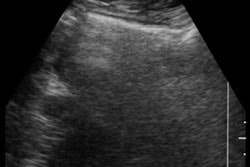Determining the cause of persistent pain following total knee replacement can be challenging and can lead to a broad differential diagnosis. In evaluating these cases, radiologists and orthopedic surgeons should be alert to the possibility of a stress fracture of the fabella, according to research presented at the American Roentgen Ray Society meeting earlier this month.
Fractures of the fabella, although rare, are associated with severe posterolateral pain. And patients with total knee replacement may be at risk for stress fractures, researchers from the VA Medical Center-University of California, San Diego believe.
To describe and document a distinctive pattern of stress fractures in the fabella after total knee replacement, the study team reviewed medical records of patients with persistent posterior knee pain following total knee arthroplasty. Of these, three patients (two women and one man, ranging in age from 63 to 70) had radiographic diagnosis of fabella fracture. All three had received a cemented total joint replacement for end-stage osteoarthritis of the knee, according to Dr. Daphne Theodorou, who presented the research results.
Pre-operative pain was relieved by the operation. During the follow-up period, however, the patients presented with a major complaint of increasing pain in the newly reconstructed knee, she said.
The VAMC-UCSD researchers saw a transverse fracture in the mid-portion of the fabella in all three patients. In two patients the fracture fragments were displaced and shifted towards the femoral condyle; in the third the fragment remained in close apposition and unchanged in location.
Due to the similarities between the patient population, and clinical and radiographic findings, the researchers postulated that patients with total knee replacement may be at increased risk for stress fractures of the fabella, owing to postoperatively altered biomechanics. As such, interpreters of radiographs should scrutinize the fabella in patients with persistent posterior knee pain after surgery, Theodorou said.
"We report our experience in the hope that our observations may alert orthopedic surgeons and radiologists to note the presence of stress fractures of the fabella in patients with TKA and late knee pain," she said.
The VAMC-UCSD team isn't the first to document the rare case of a stress fracture of the fabella. In 1988, researchers discussed a traumatic avulsion fracture in a middle-aged woman, which presented as intermittent posterolateral localized knee pain accentuated by compression against the lateral femoral condyle and by active and passive knee extension (J Manipulative Physiol Ther 1988 Oct;11(5):422-5). The researchers hypothesized that the accumulated chronic microtrauma of the woman's osteoarthritic fabellofemoral joint during the whip-kick of daily breaststroke swims may have precipitated the fabella stress fracture.
By Erik L. Ridley
AuntMinnie.com staff writer
May 29, 2000
Let AuntMinnie.com know what you think about this story.
Copyright © 2000 AuntMinnie.com




















